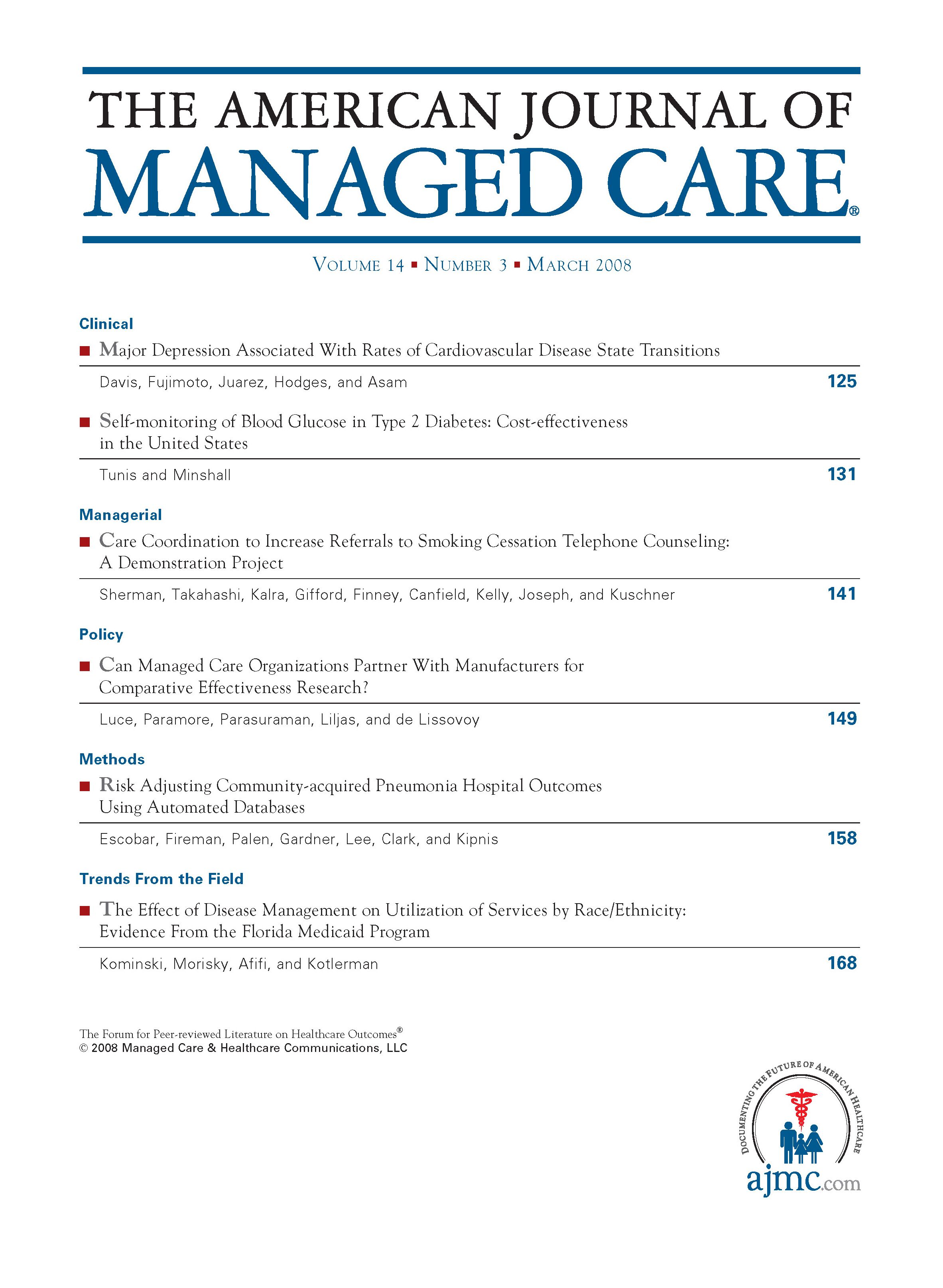- Center on Health Equity & Access
- Clinical
- Health Care Cost
- Health Care Delivery
- Insurance
- Policy
- Technology
- Value-Based Care
Correspondence regarding, "Cost Effectiveness of Thromboprophylaxis With a Low-Molecular-Weight Heparin Versus Unfractionated Heparin in Acutely Ill Medical Inpatients"
TO THE EDITORS
McGarry and colleagues did an excellent job in providing an economic perspective on the effectiveness of thromboprophylaxis with a low-molecular-weight heparin versus unfractionated heparin in acutely ill medical inpatients.1 Low molecular weight heparins (LMWHs) have gained wider acceptance as the drugs of choice in prophylaxis of venous thromboembolism (VTE) due to their superior efficacy and cost effectiveness to unfractionated heparin, and the reduced risk of heparin-induced thrombocytopenia and osteoporosis.1
However, new developments in the realm of VTE prophylaxis in medically ill patients have provided us some valuable insights. The ARTEMIS trial demonstrated the efficacy and safety of fondaparinux in medically ill patients versus placebo.2 Although there are no comparative trials between LMWHs and fondaparinux in medically ill patients, there have been a few head-to-head pharmacoeconomic studies in other patient types that have shown fondaparinux to be cost effective.3,4
McGarry's study notwithstanding, we believe the current question to be addressed is how to choose between LMWHs and fondaparinux and which agent is a more cost-effective option in medically ill patients.
Alexander C. Okwonna, PharmD
University of Houston
REFERENCES
Am J Manag Care.
1. McGarry LJ, Thompson D, Weinstein MC, Goldhaber SZ. Cost effectiveness of thromboprophylaxis with a low-molecular-weight heparin versus unfractionated heparin in acutely ill medical inpatients. 2004;10:632-642.
2. Cohen AT, Gallus AS, Lassen MR, et al. Fondaparinux vs placebo for the prevention of venous thromboembolism in acutely ill medical patients (ARTEMIS). Program and abstracts of the XIX Congress of the International Society on Thrombosis and Haemostasis; Birmingham, UK, July 12-18, 2003. P2406. Available online at http://www.blackwellpublishing.com/isth2003/abstract.asp?id=10228. Accessed November 29, 2004.
Am J Cardiovasc Drugs.
3. Dranitsaris G, Kahn SR, Stumpo C, et al on behalf of The Fondaparinux Canadian Health Economic Study Investigators. Pharmacoeconomic analysis of fondaparinux versus enoxaparin for the prevention of thromboembolic events in orthopedic surgery patients. 2004;4(5):325-333.
Pharmacoeconomics.
4. Sullivan SD, Davidson BL, Kahn SR, Muntz JE, Oster G, Raskob G. A cost-effectiveness analysis of fondaparinux sodium compared with enoxaparin sodium as prophylaxis against venous thromboembolism: use in patients undergoing major orthopaedic surgery. 2004;22(9):605-620.

Trends in Hospital Pricing for Vulnerable Emergency Department Users, 2021-2023
December 4th 2025Self-pay emergency department prices rose significantly from 2021 to 2023, especially at for-profit and system-affiliated hospitals, highlighting growing affordability challenges for uninsured and underinsured patients.
Read More
Integrated Care for Chronic Conditions: A Randomized Care Management Trial
December 3rd 2025The authors sought to understand the differential impact of payer-led community-based care management approaches on stakeholder-oriented outcomes for publicly insured adults with multiple chronic conditions.
Read More

